In the past several years, ramen has seen a renaissance. No longer is the word associated with 24-pack boxes of just-add-water bowls beloved by thrifty college students. Today’s ramen is both a culinary experience and good old-fashioned comfort food, distinguished by its sumptuous, savory broth; noodles with just the right amount of bite; vegetables both roasted and fermented; and perfect soft-cooked eggs with orange, runny yolks.
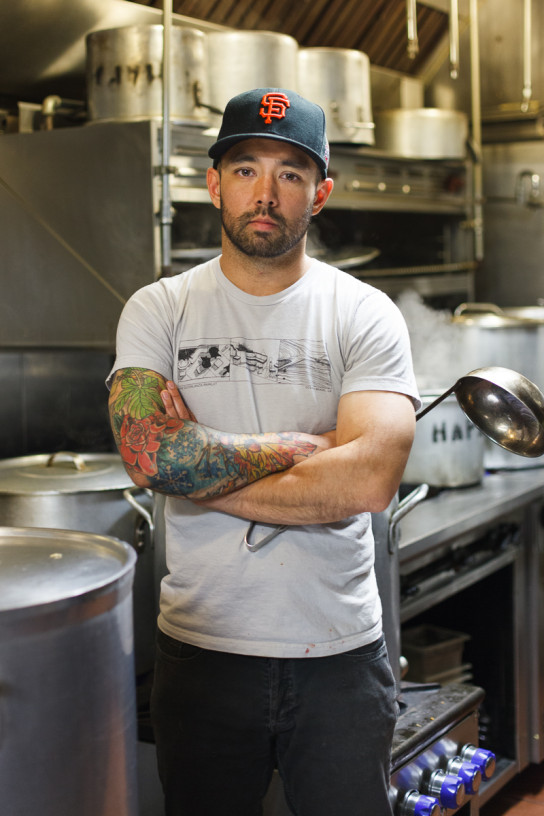 Richie Nakano is one of the chefs responsible for taking ramen to a new level. A few years ago he was working as a line cook in San Francisco, eating plenty of ramen on his own time.
Richie Nakano is one of the chefs responsible for taking ramen to a new level. A few years ago he was working as a line cook in San Francisco, eating plenty of ramen on his own time.
“I felt horrible after eating it. Most ramen has MSG and other garbage, and bad noodles with food coloring and preservatives,” he said. “So I started making it in my kitchen at home for myself and my friends.”
Around the same time, Richie was offered a well-paid job in New York and was ready to make a move — until his wife got pregnant. He decided to open his own business instead, making and serving ramen at farmers’ markets and pop-ups. Hapa Ramen has been busy ever since.
We met Richie in the kitchen he rents in the Mission district of San Francisco, where pork neck bones simmered in giant aluminum pots on the stove and his team trimmed and chopped pounds of broccoli. He was preparing for service at the Ferry Building Farmers’ Market on Thursday, where he’d serve his usual lineup: fried chicken ramen, pork ramen, a vegetarian-miso ramen, and everything ramen. He took a break to walk us through his process from start to finish, detailing all the components that create a truly sublime bowl of ramen.
STOCK
Richie stirred one of the pots simmering on the stoveop with a paddle, preparing to add sachets of whole carrots and onions wrapped in cheesecloth. “Once the sachets are in, the smell starts to change,” he explained.
It takes 40 pounds of bones — pork and chicken — to make 80 quarts of ramen stock. As a result, Hapa Ramen operates nose-to-tail, purchasing whole pigs and breaking them down in the kitchen. He uses every part; the bones and skin are ideal for stock, adding body and texture. He also adds already reduced chicken and pork stock to fresh batches, creating layers of flavor and depth. Other ingredients include konbu, a type of seaweed that builds umami, and dashi, a Japanese fish stock, as well as ginger, garlic, soy, mirin and sake.
The ramen here has changed over time. In the beginning, Richie would slow cook the stock, simmering it over the course of a couple of days. Now he lets it simmer first but then cranks up the heat to boil the stock more aggressively and create a richer, deeper flavor. He no longer roasts the bones before boiling, preferring the cleaner taste that raw bones contributes. Still, the process to make the stock is involved, beginning at 7:30 am and extending past 1:30 pm.
Richie prides himself on having something for everyone at Hapa Ramen, and his vegetarian ramen is a hit with customers. The vegetable stock includes not only onions and carrots, but whatever else is in season, with ingredients rotating throughout the year. In the summer, his team makes a corn stock; in the winter, they use squash. During our visit, he pureed celery root with miso to create a creamy base to add body to the stock.
NOODLES
In Hapa Ramen’s early days, Richie had one person making noodles from scratch — for 10 hours a day. Now he outsources the noodles to an expert in San Jose, who can create 500 portions in two hours with a 50-yard-long machine. He still uses Richie’s recipe, with organic wheat and a few other simple ingredients.
“The noodles aren’t bright yellow, and they’re not super straight or wavy like lower quality ramen you see,” he told us. “We focus more on texture than flavor — you want a good chewy noodle.”
Hapa Ramen cooks all noodles to order, just one minute in a pot of boiling water.
PROTEINS
For Richie, breaking down whole pigs looks a little different than it does at most restaurants. “We’re not preserving restaurant cuts, so the skin is taken off, and it’s boned-out,” he said.
With the leg, he makes pork leg confit; he roasts the shoulder and loin; and he cooks the belly sous vide for consistency, ensuring the same product every time. He brings in whole chickens as well, both for making stock and deep-frying to top his fried chicken ramen.
“People get mad when we run out of the fried chicken,” he said with a grin.
The eggs are cooked sous vide as well, so that the team can cook dozens at once and easily achieve an exact internal temperature. The result is a custardy, soft egg with delicate whites and a creamy orange yolk that, when broken, distributes its richness throughout the whole bowl.
GARNISHES
“People are used to getting frozen corn and canned bamboo shoots in ramen,” Richie said. “There aren’t good garnishes out there.” As a result, he focuses on fresh ingredients — “the good stuff” — sourcing all of his produce from vendors at the farmers’ market. “We feed them and trade.”
Hapa Ramen’s garnishes rotate with the seasons, but they usually include pickled kombu, nori and scallions. The vegetables may be anything in season, such as arugula, broccolini and asparagus in the spring. “We want each vegetable to have its own identity, so we include a mix of roasted, raw and blanched.”
His team also makes their own kimchi every couple of months, fermenting it in the kitchen’s giant walk-in refrigerator (they say the colder temperature helps it develop better flavor). The kimchi also varies throughout the year, made from “whatever’s in season that’s ‘a lot,'” according to Richie. He added: “You can kimchi anything.”
BUILDING A BOWL
When it’s time for service, the Hapa Ramen team creates each bowl to order; one person cooks the noodles, one mans the stock, and so on. Each customer likes their ramen a little different — no noodles, extra noodles — so they’re ready to accommodate any request. Here’s how it all came together in the sample bowl Richie made for us.
Boil the noodles: The fresh noodles were cooked for exactly one minute in a pot of boiling water, then added to the bottom of a bowl.
Add the veggies, meat and garnishes: We watched as he topped the noodles with roasted broccolini, asparagus, kombu, kimchi, scallions, an egg, roasted pork slices and fermented garlic oil.
Top it off: He ladled steaming stock into the bowl to surround all of the ingredients.
“There’s the sweet pork, salty broth, and bitter garlic,” Richie said as we spooned ramen from the bowl, tasting the layers of complex flavor and medley of textures. For a minute, we were all quiet. And then we went back for another bite.

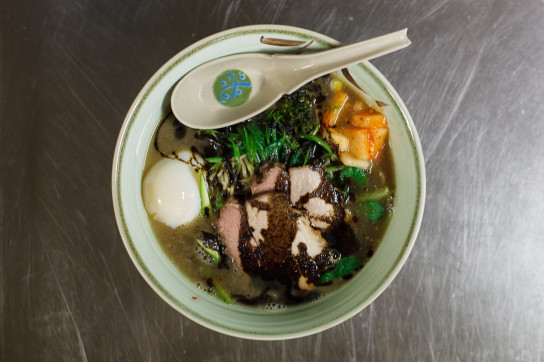
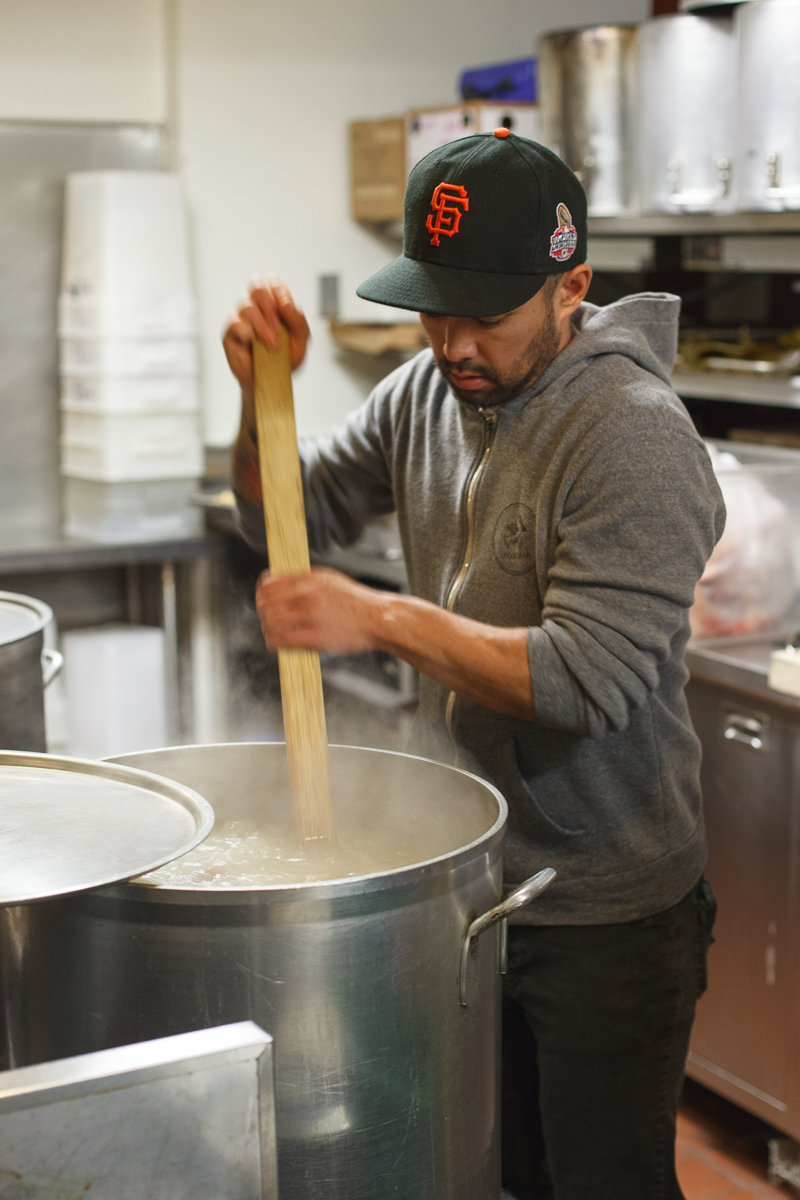
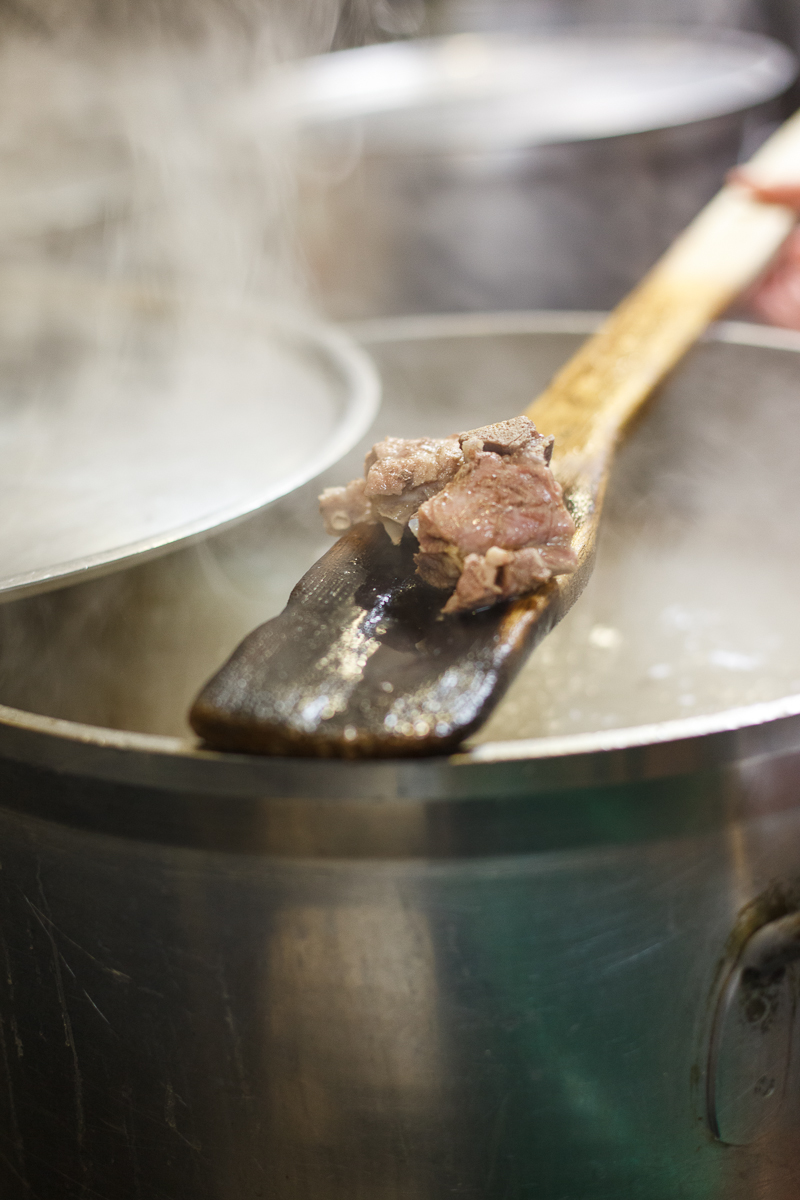
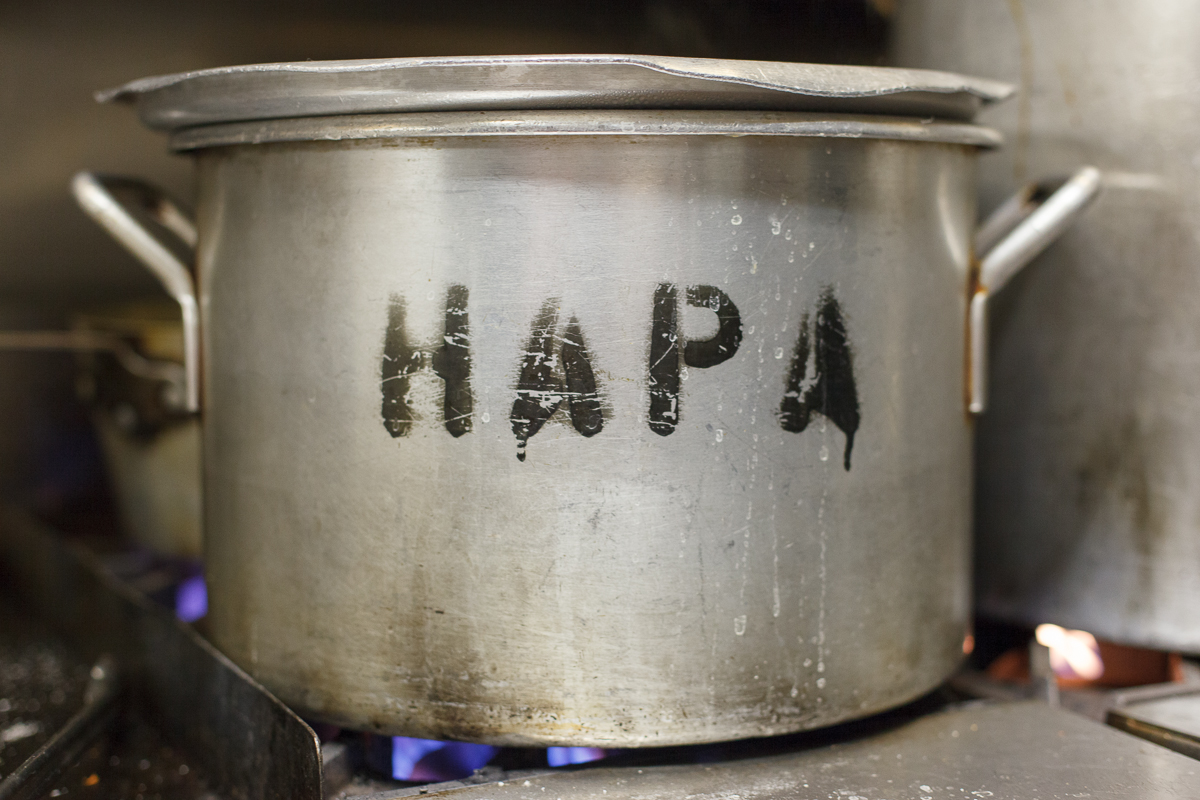

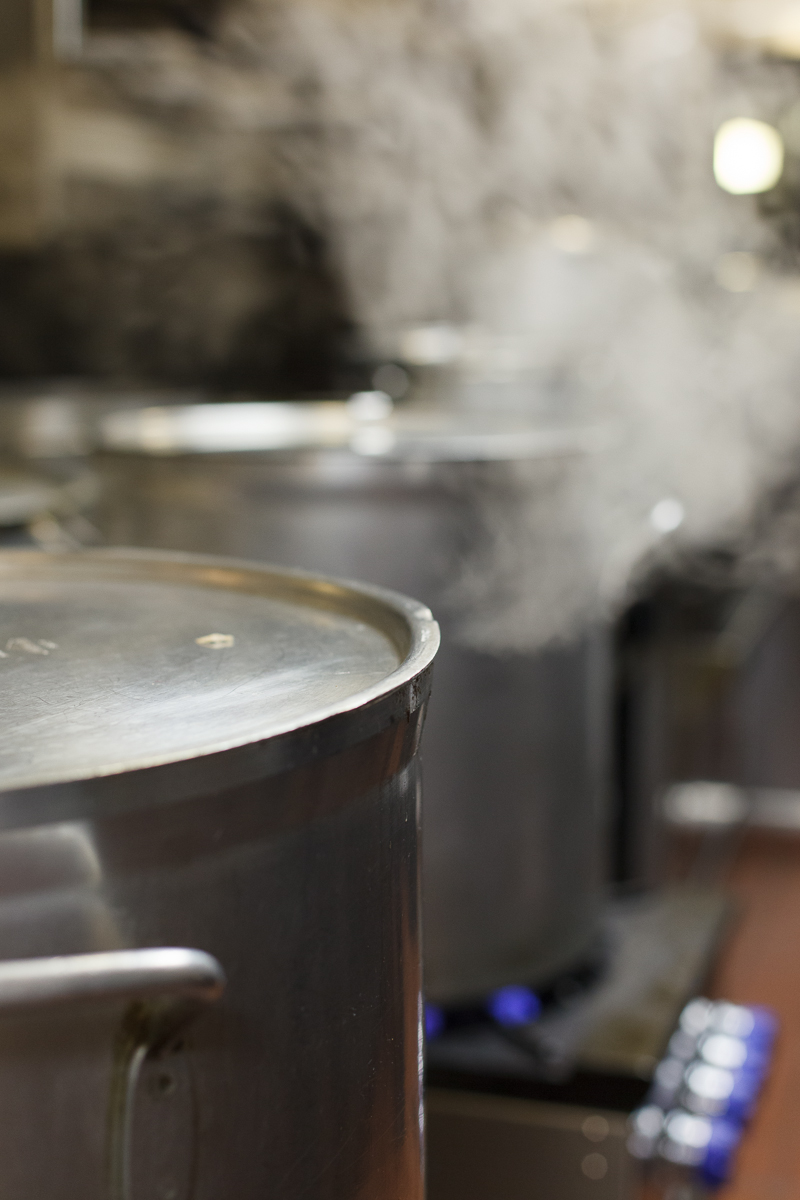
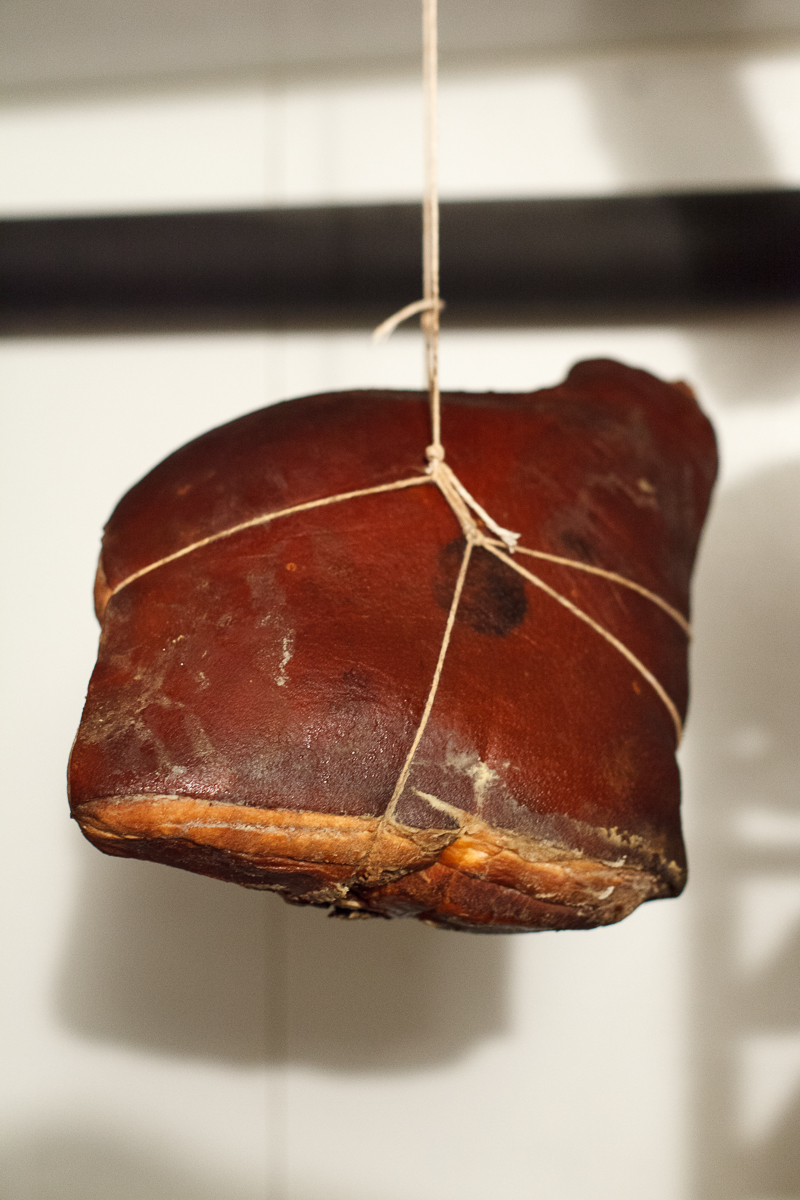


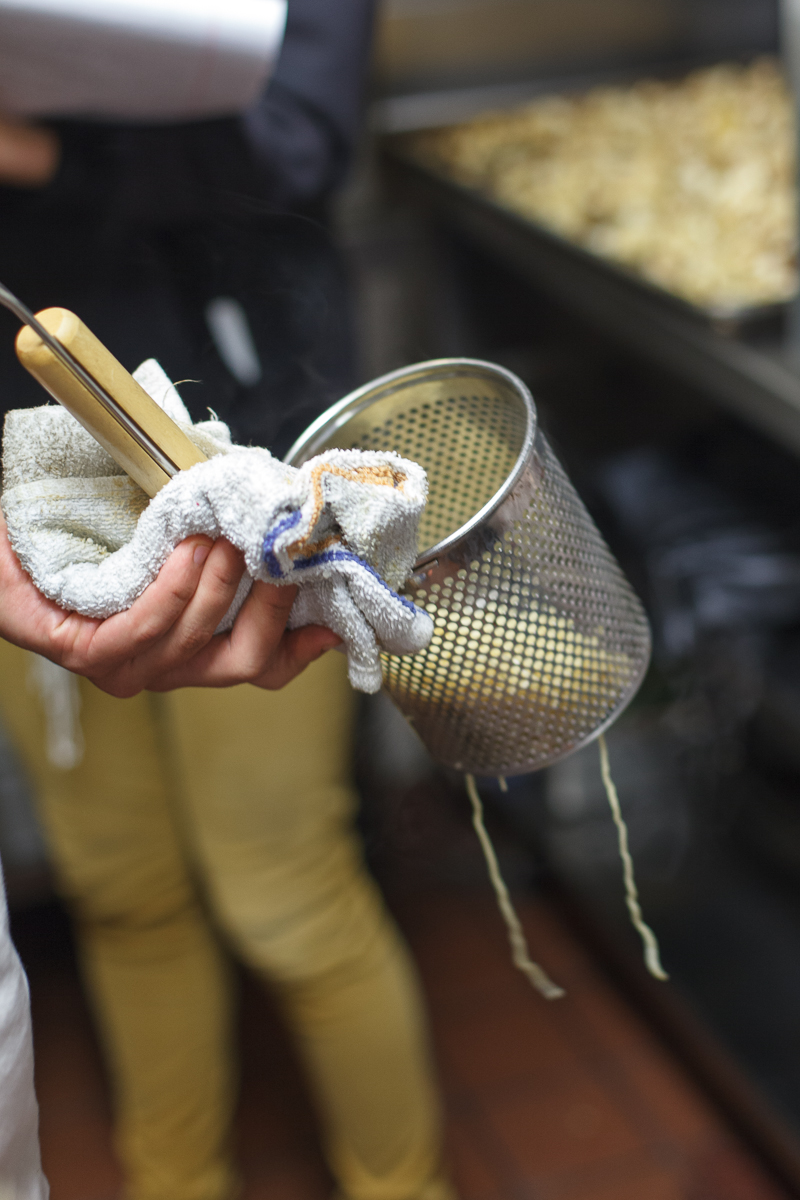

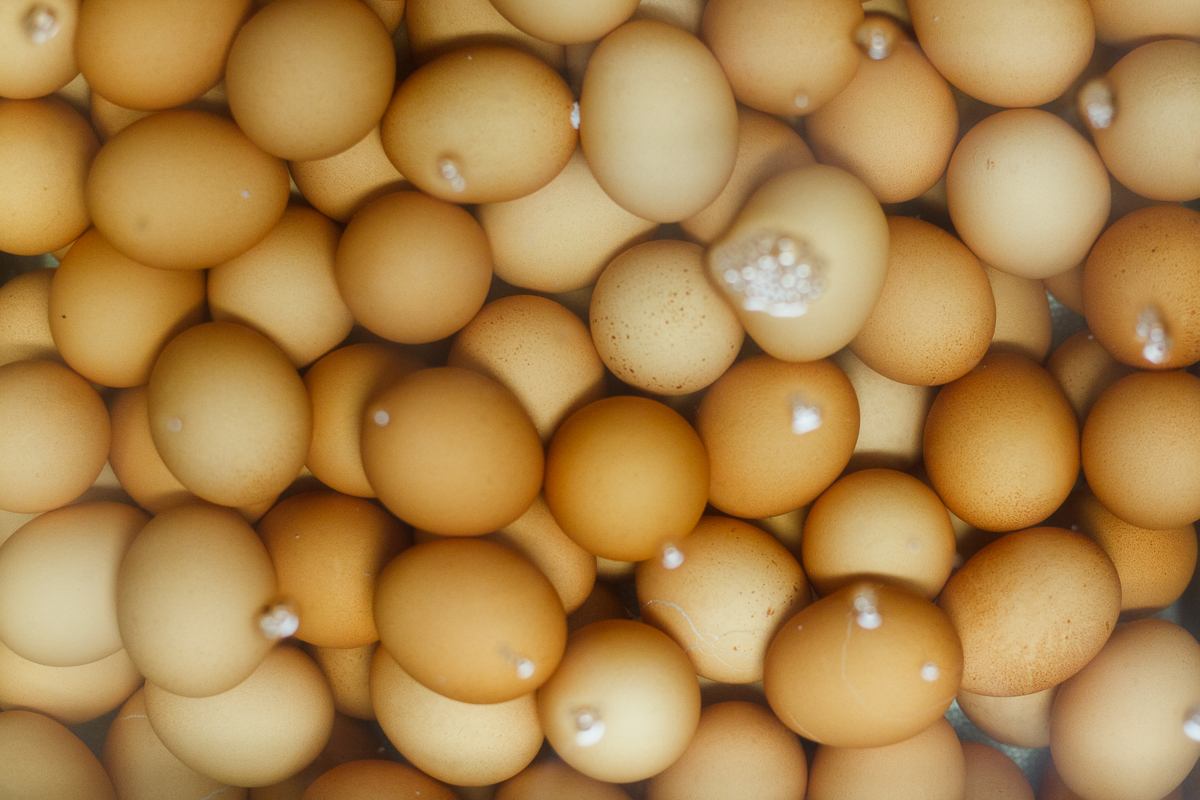
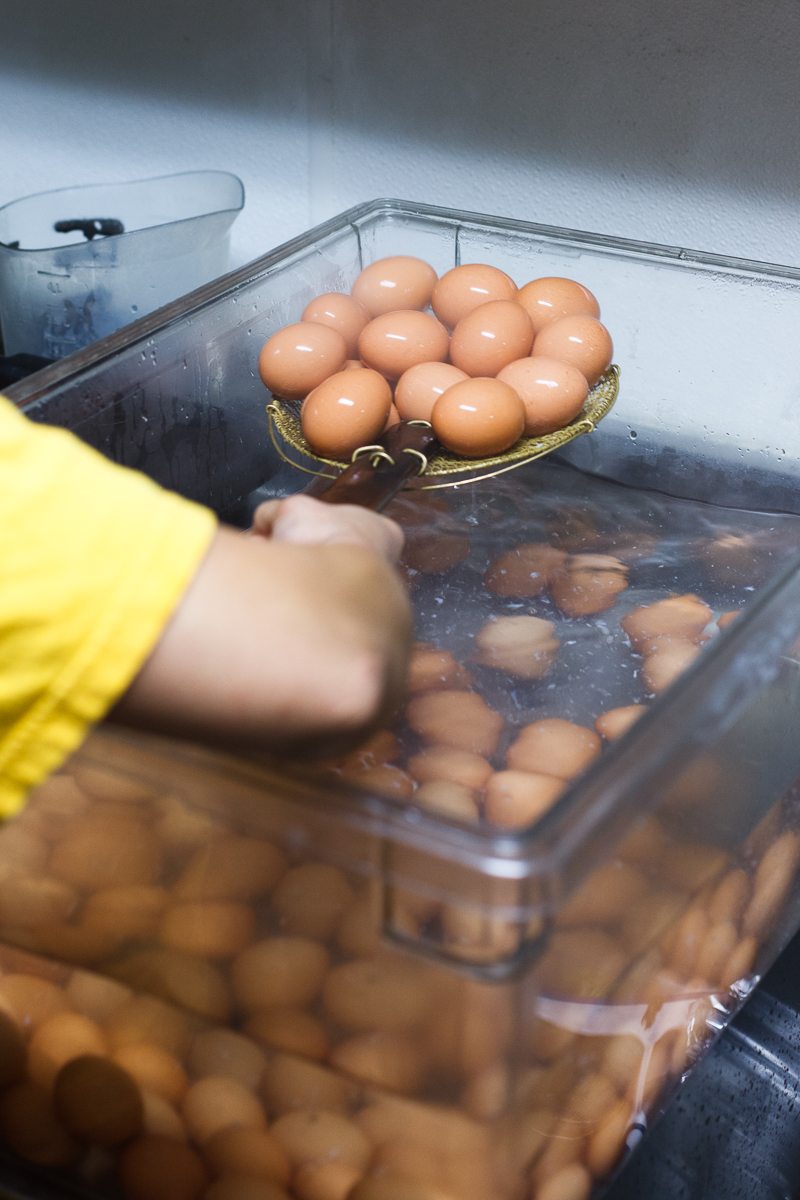
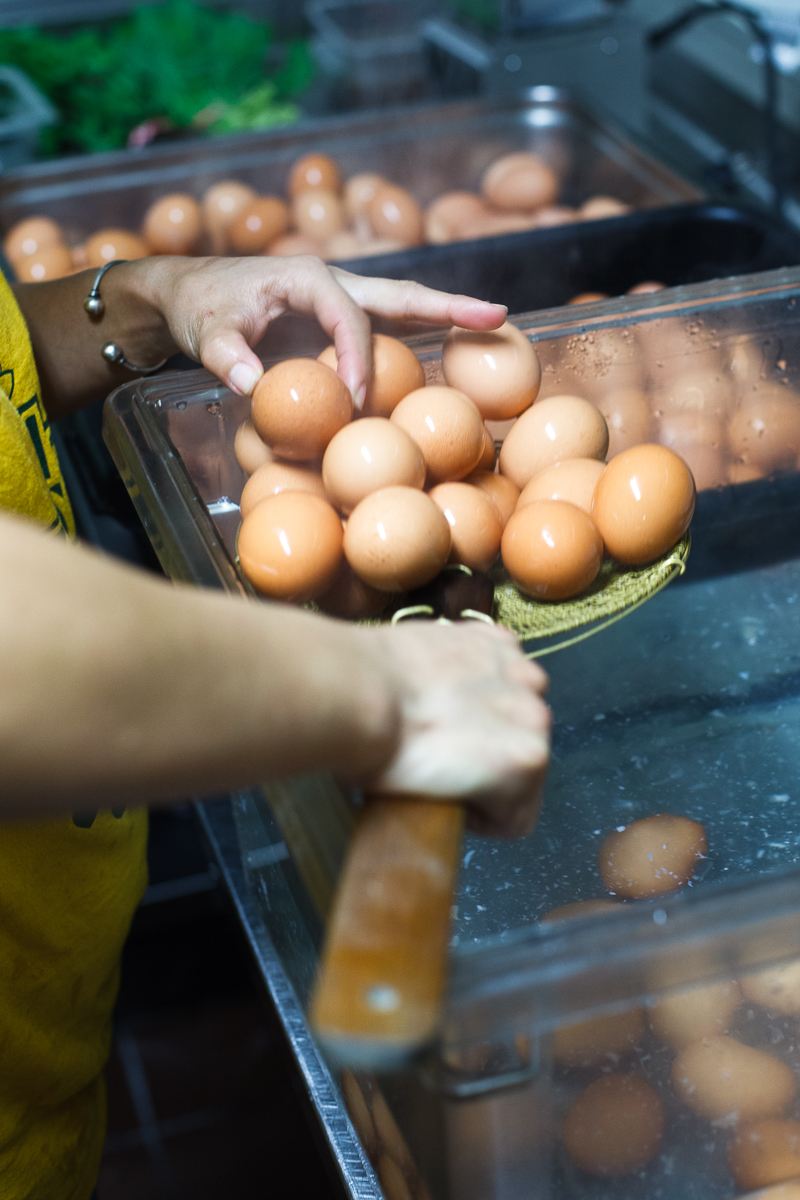
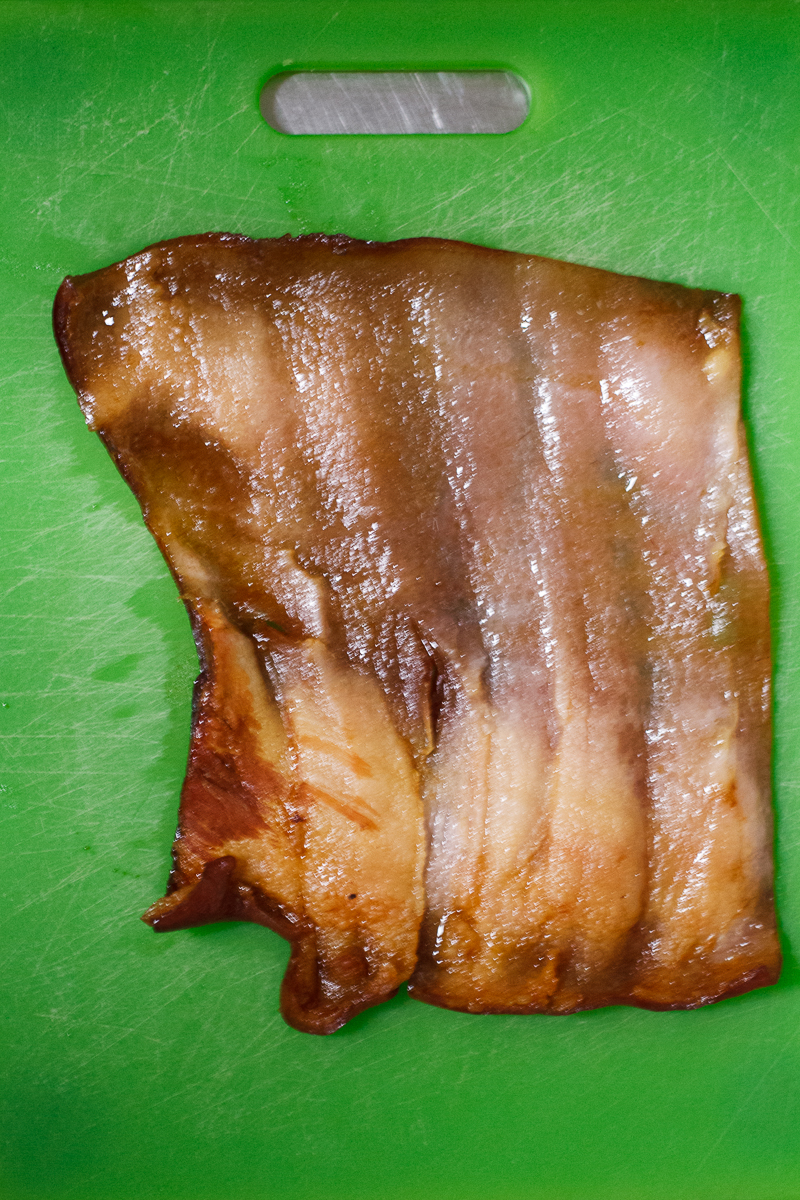

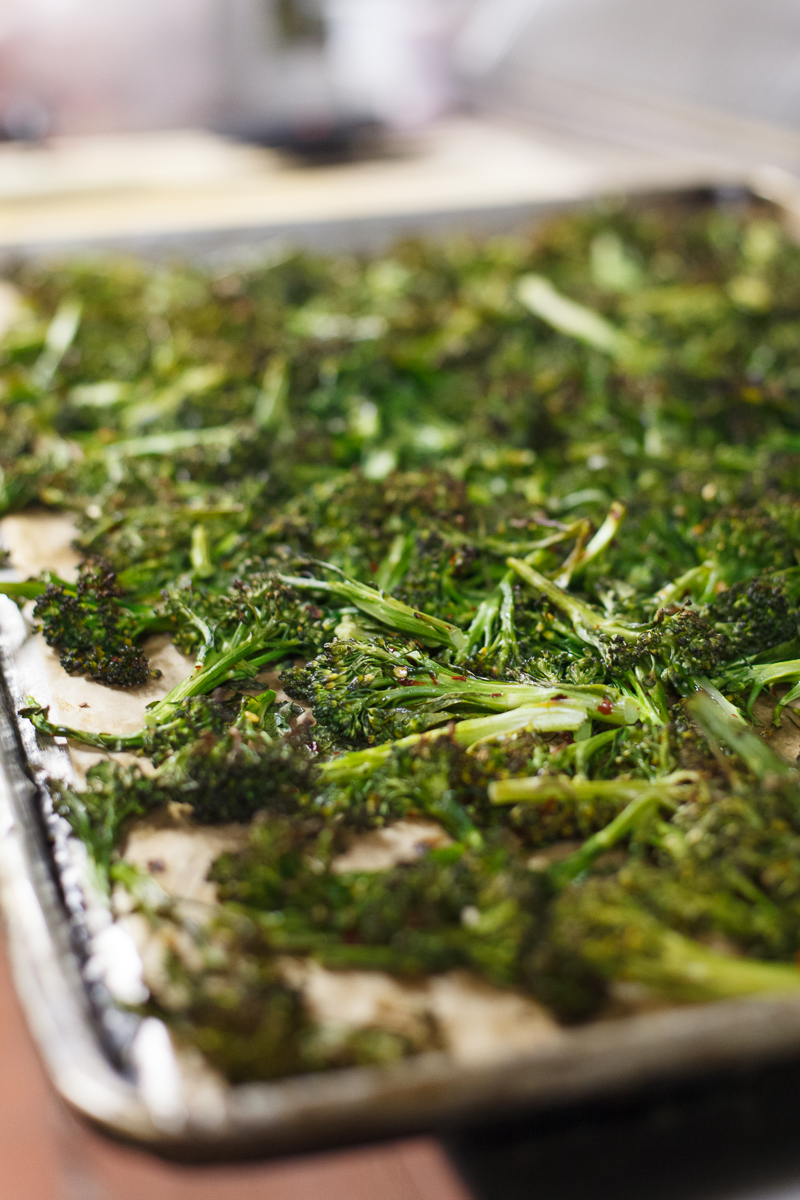
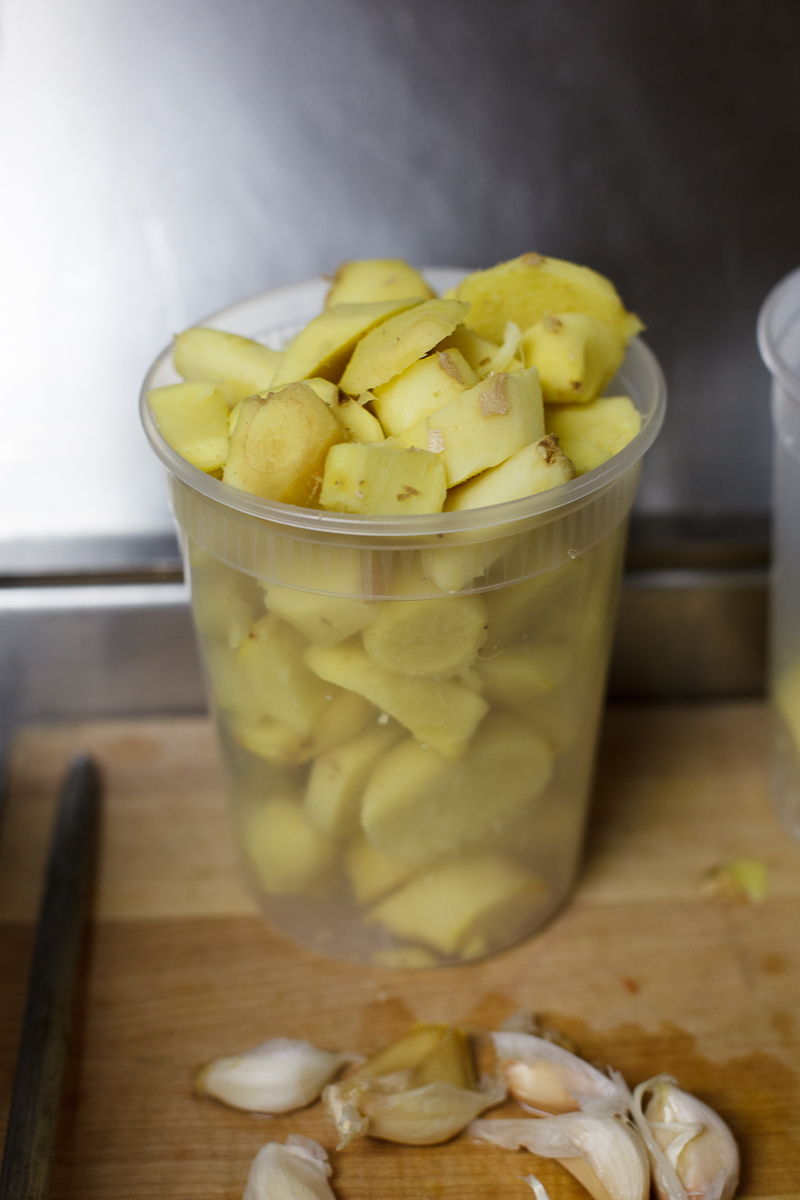
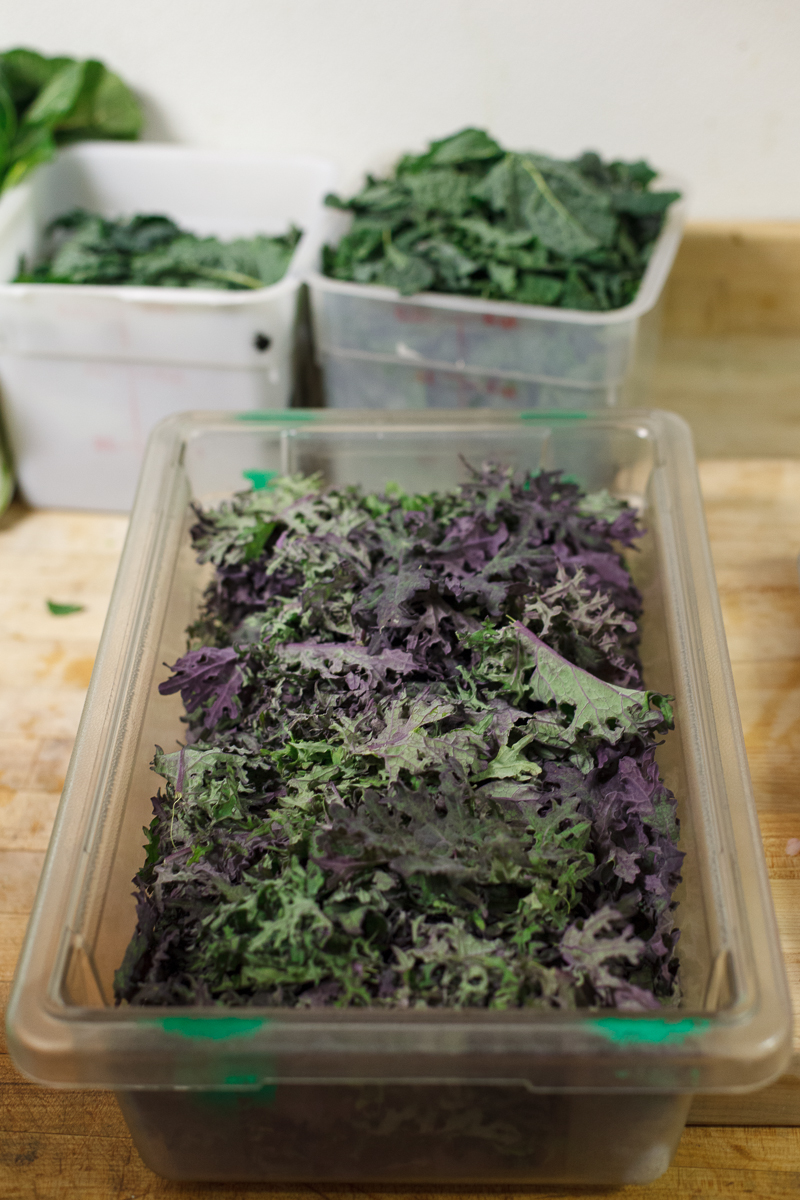
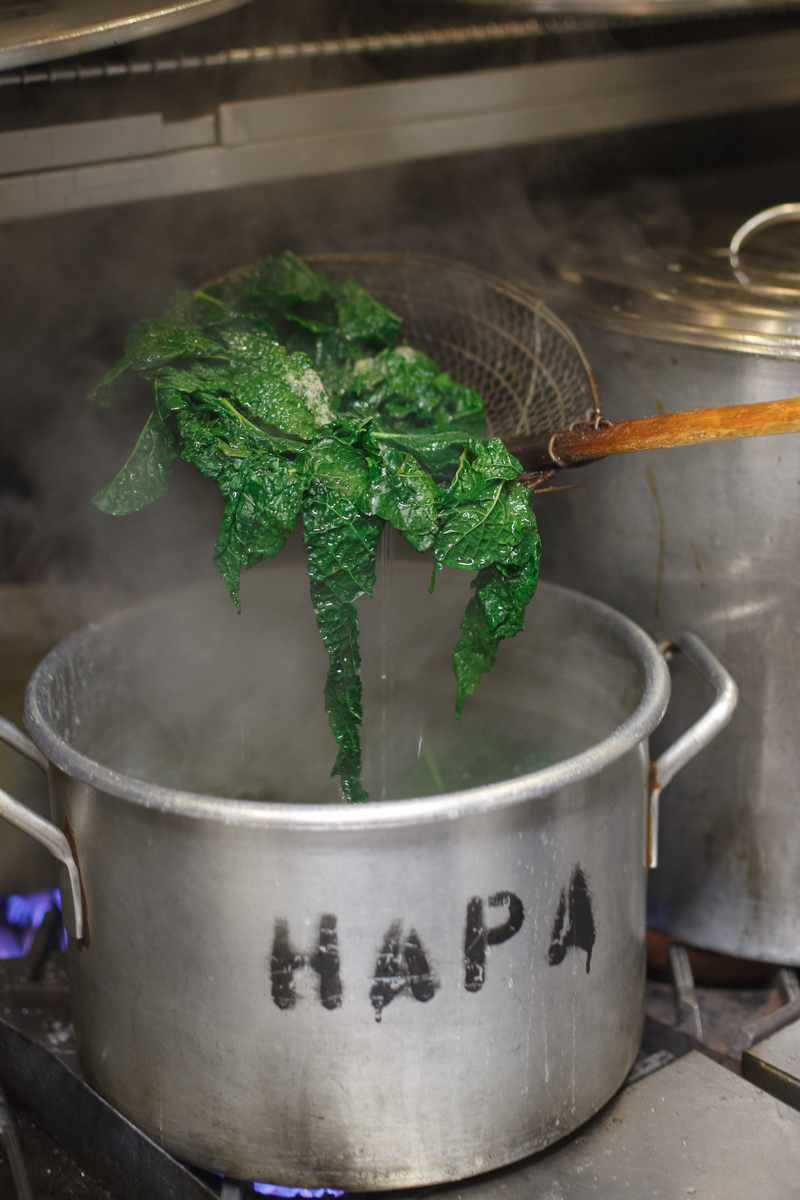
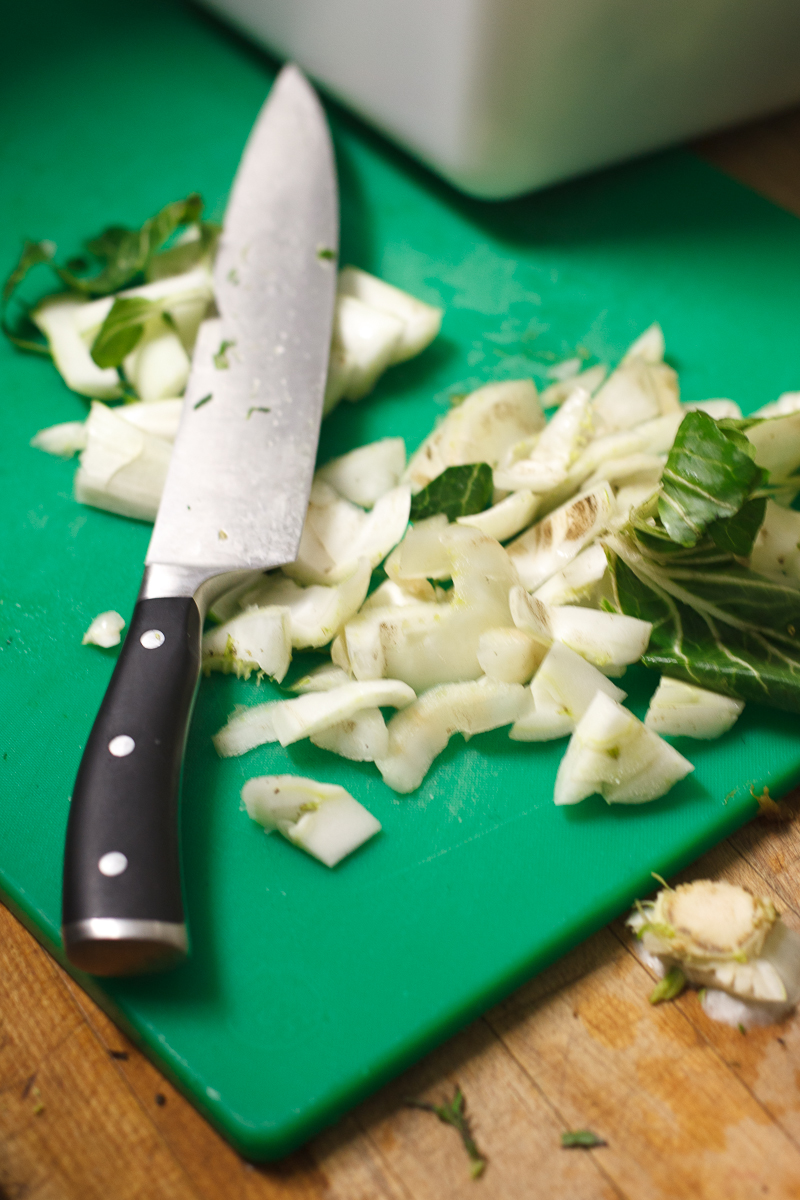


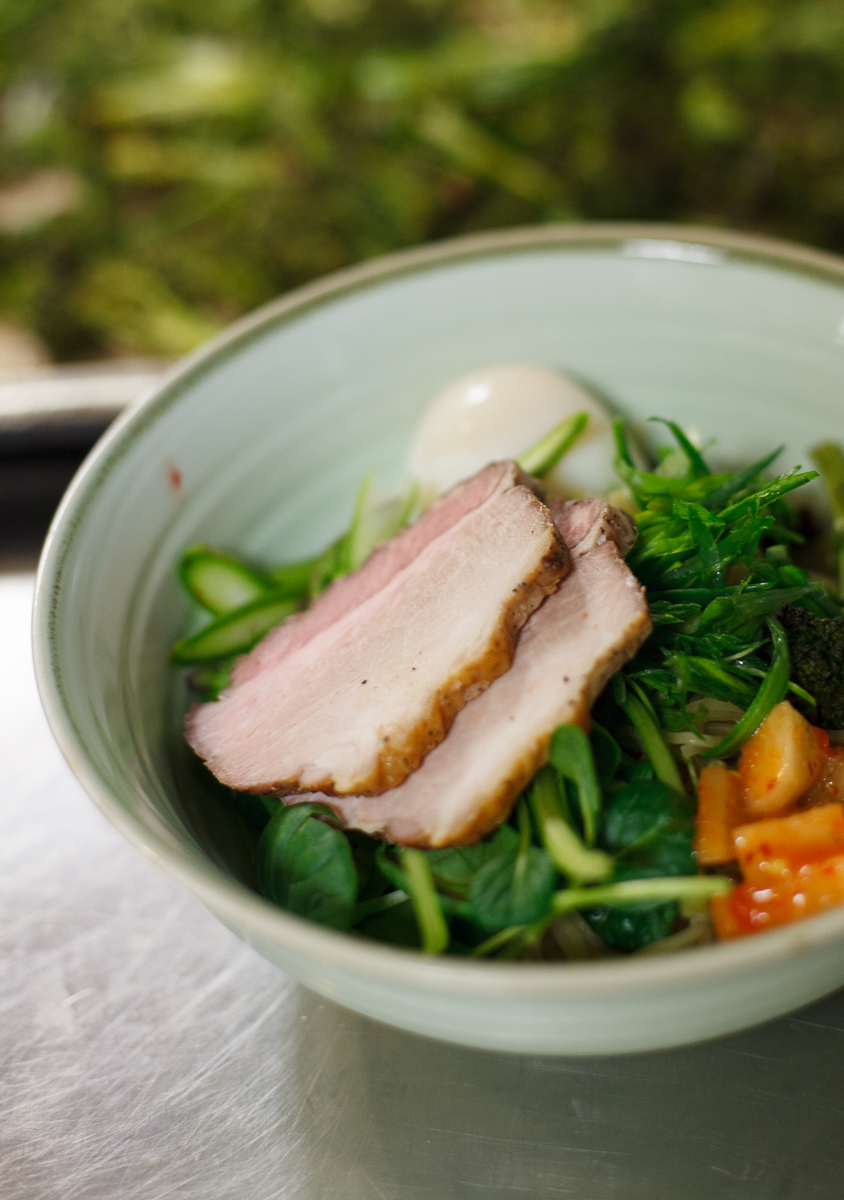
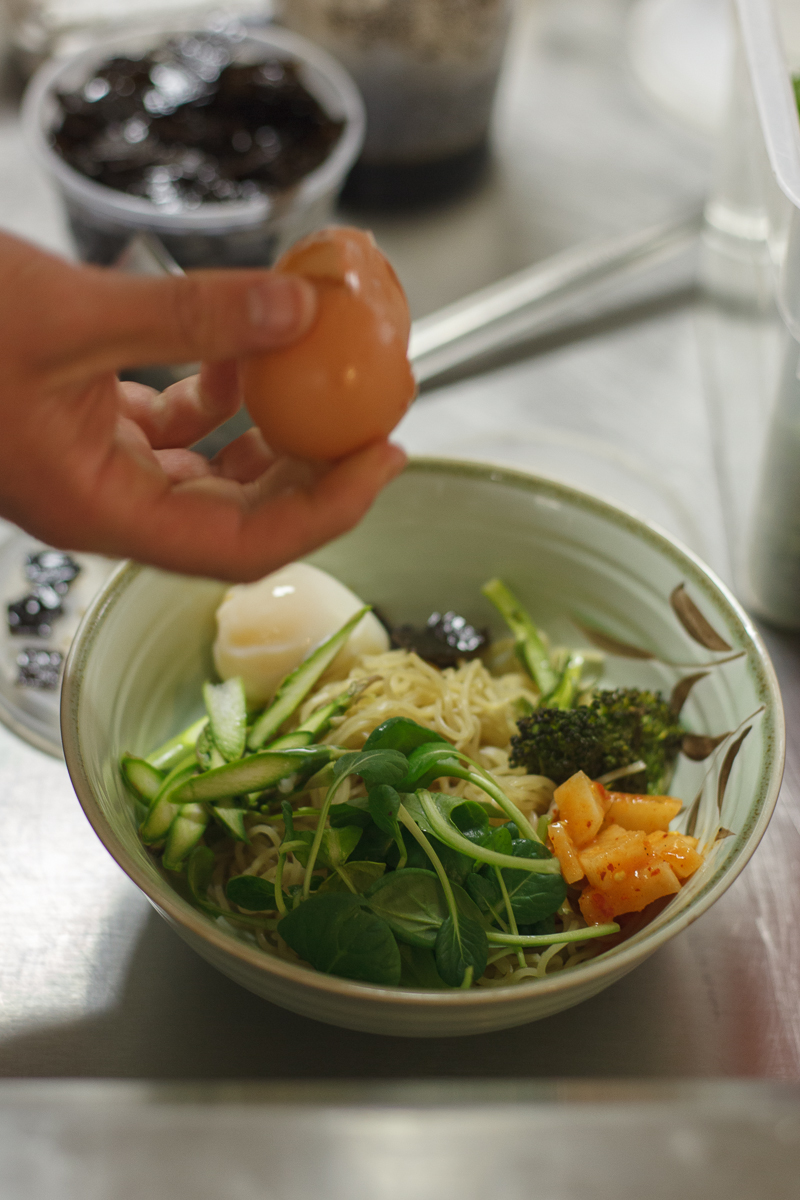
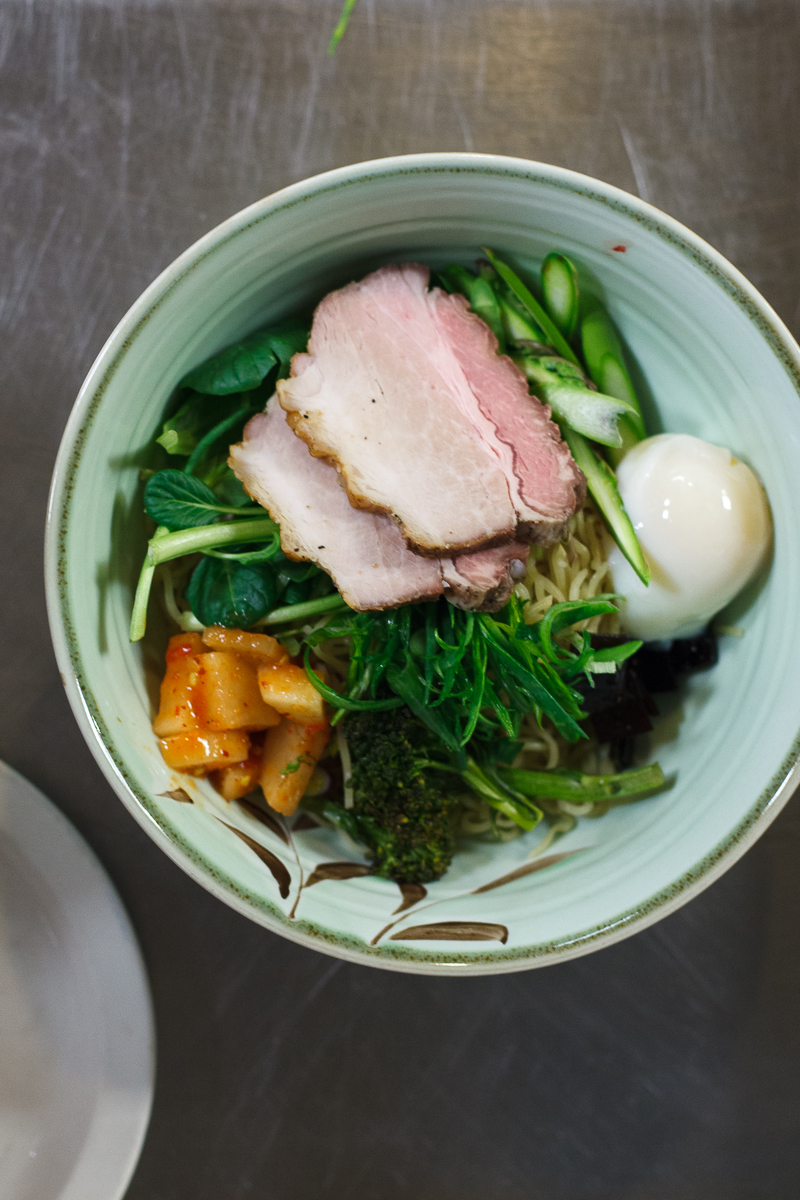
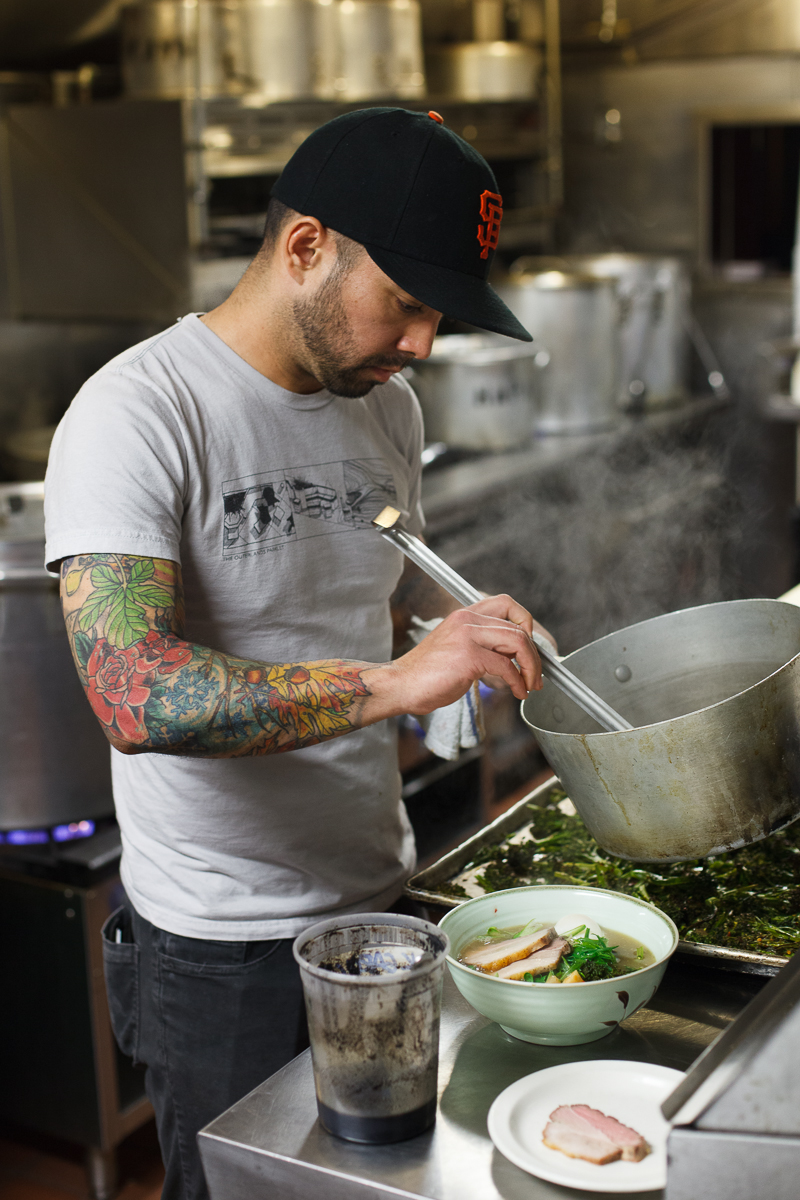

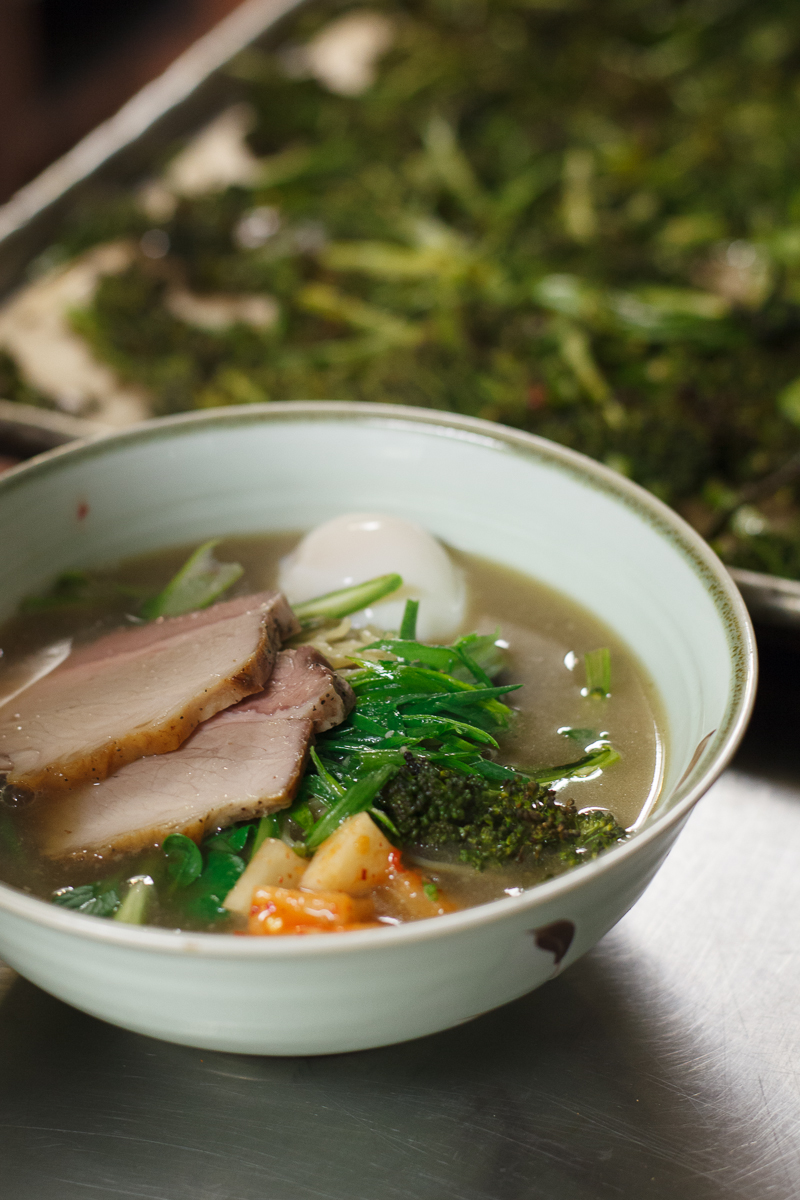
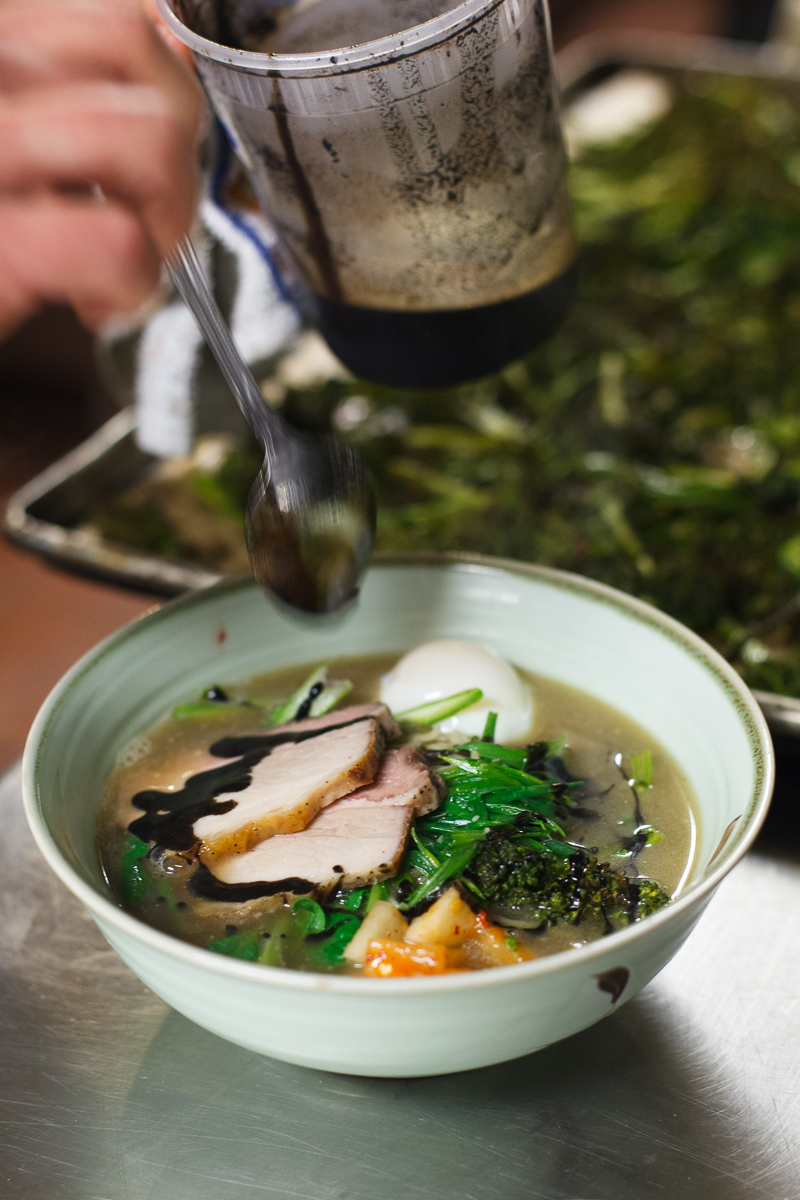
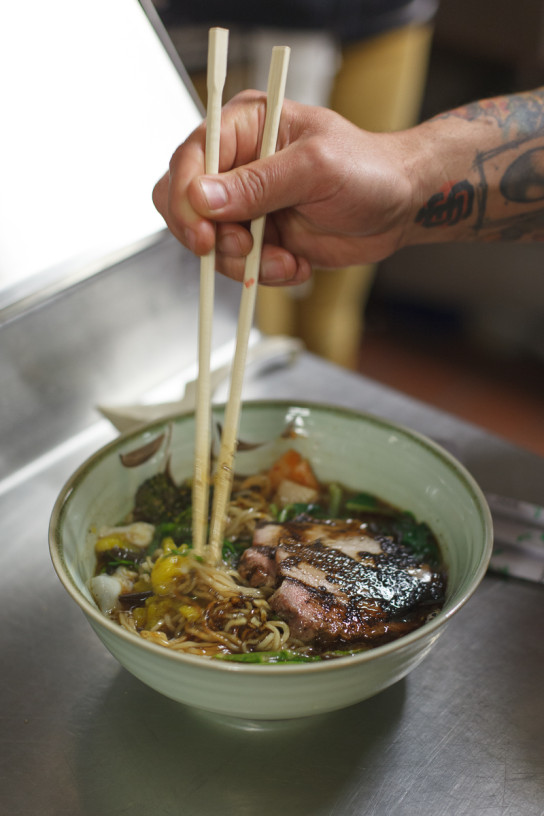
4 comments
[…] How It’s Done: Hapa Ramen […]
Just looking at this makes me want to cry and shout. It looks so delicious. Wish to have such cooker at home too. I wonder how he manages to combine all these ingredients together with its health-giving effects. Wish to have a lesson with him, perhaps I’m a good one too.
[…] do dia: Hapa Ramen do […]
I have eaten Richie’s pork ramen and, it is sublime. If you haven’t been to the Ferry Building, or one of his pop-ups around San Francisco, do yourself a huge favor and get there toute de suite. You’ll be talking about it for months.